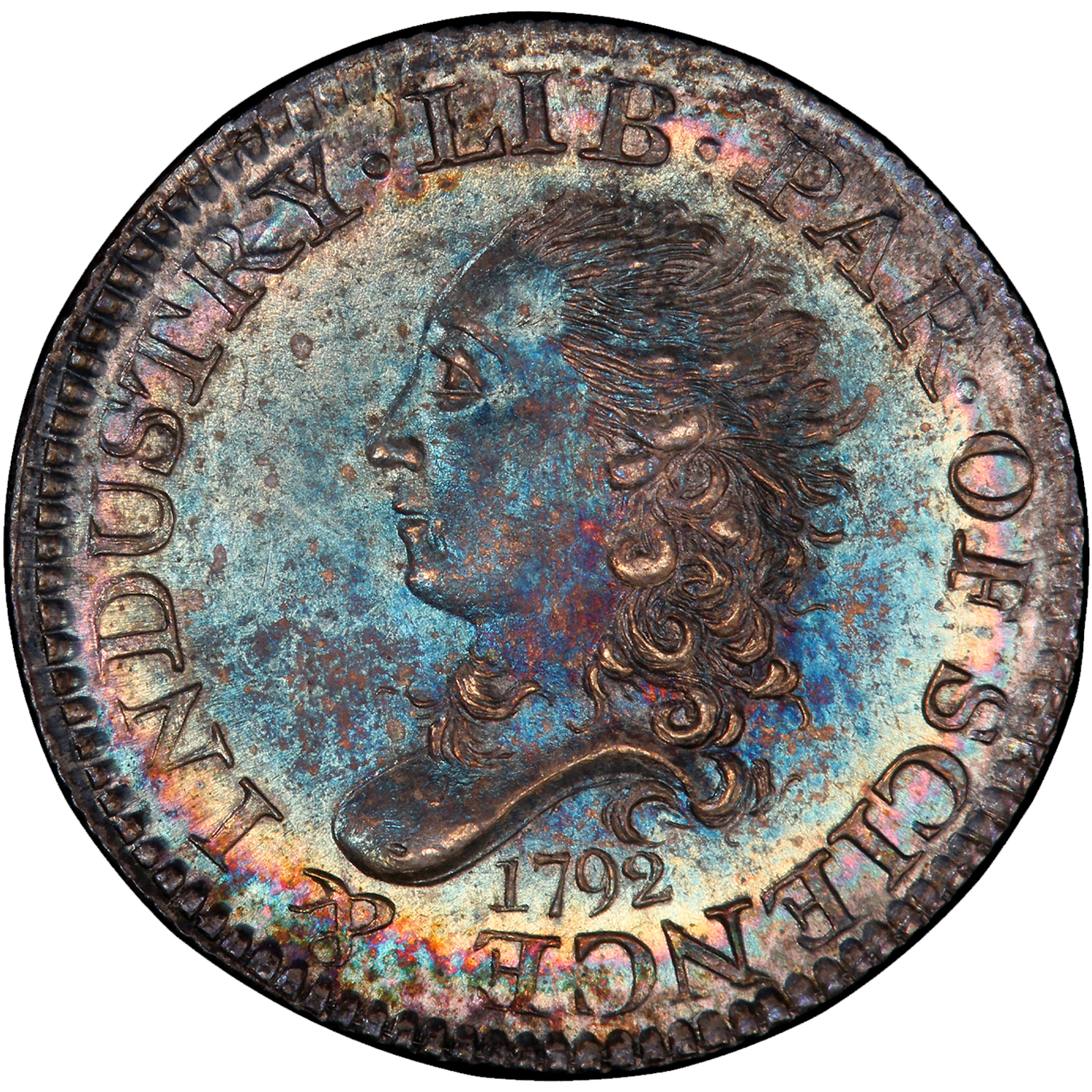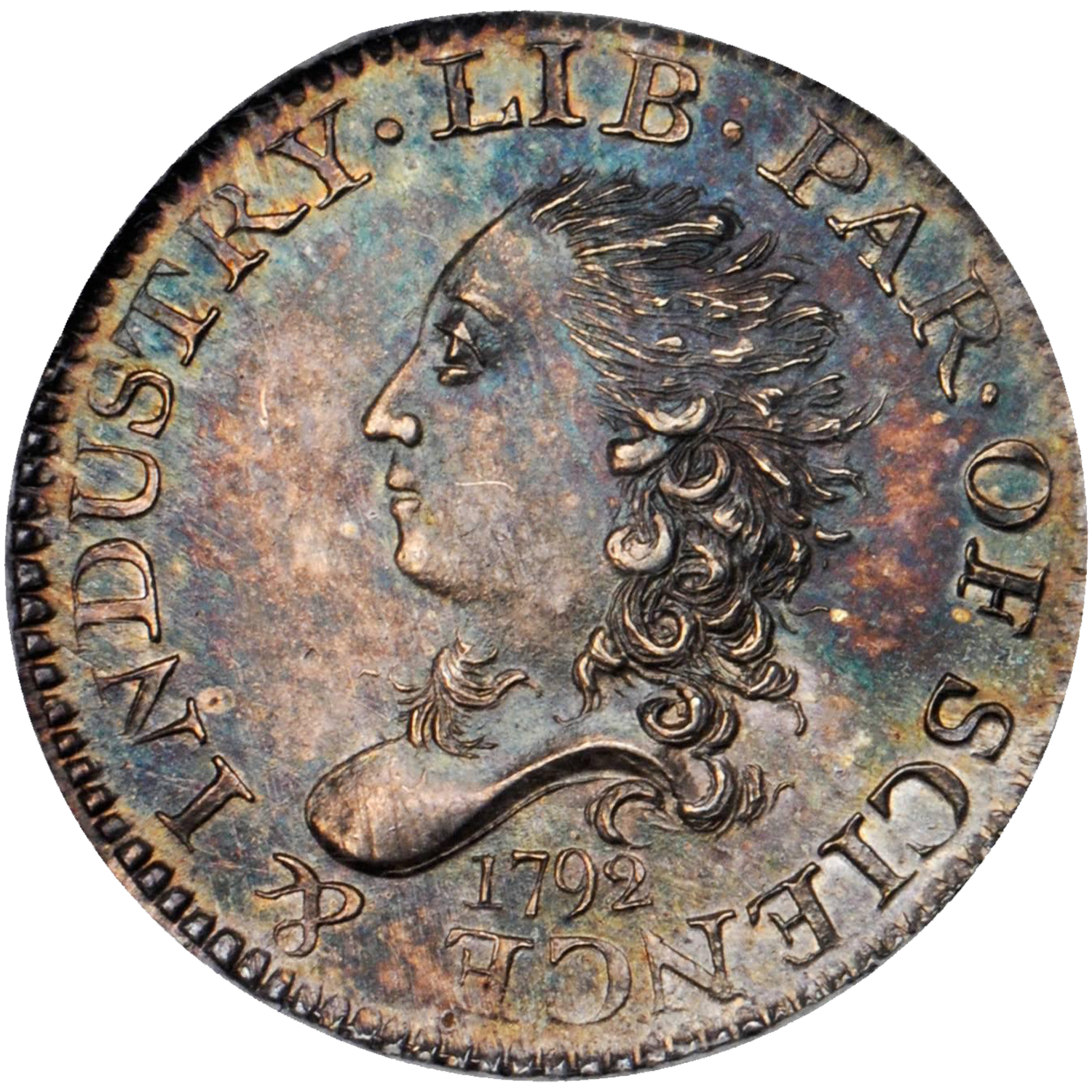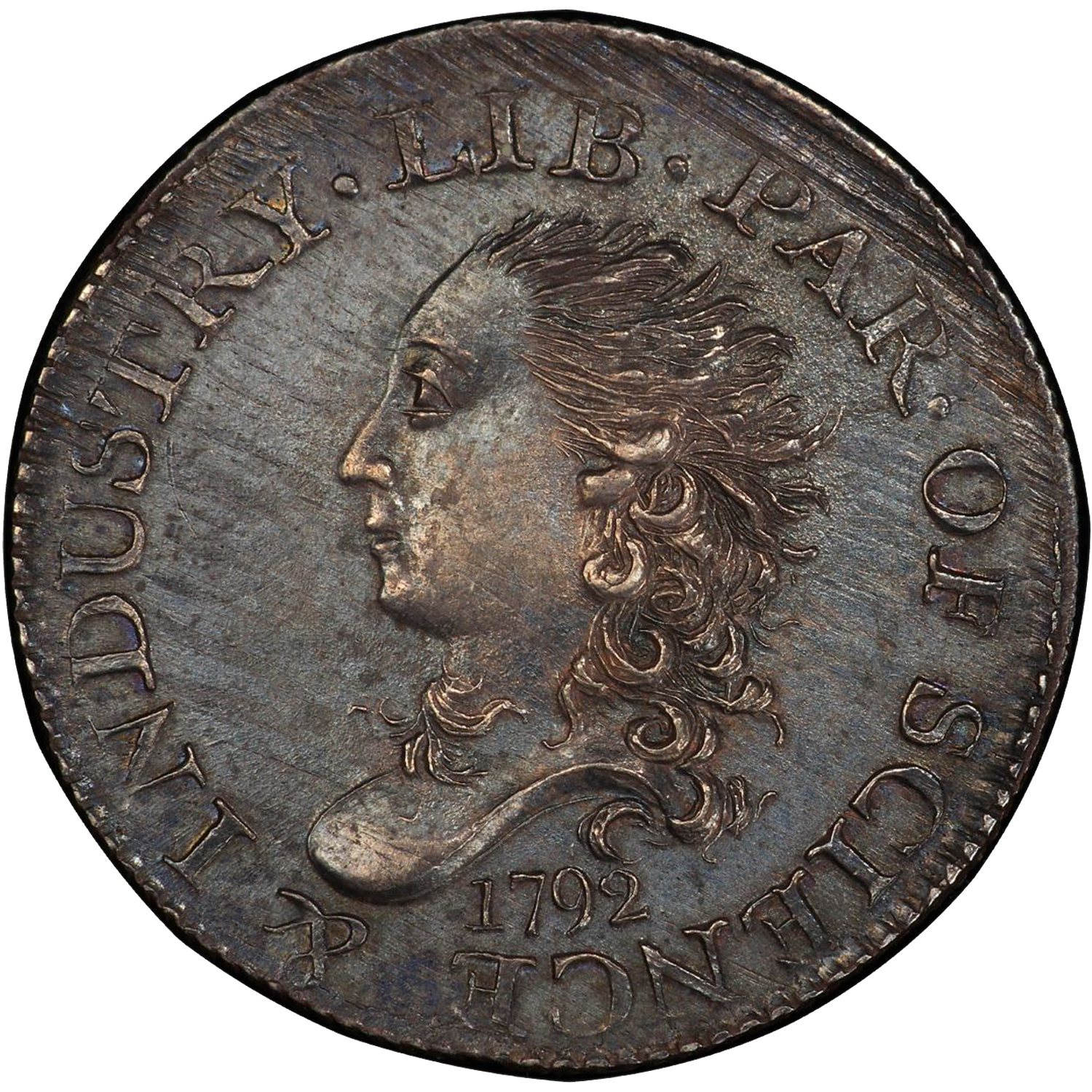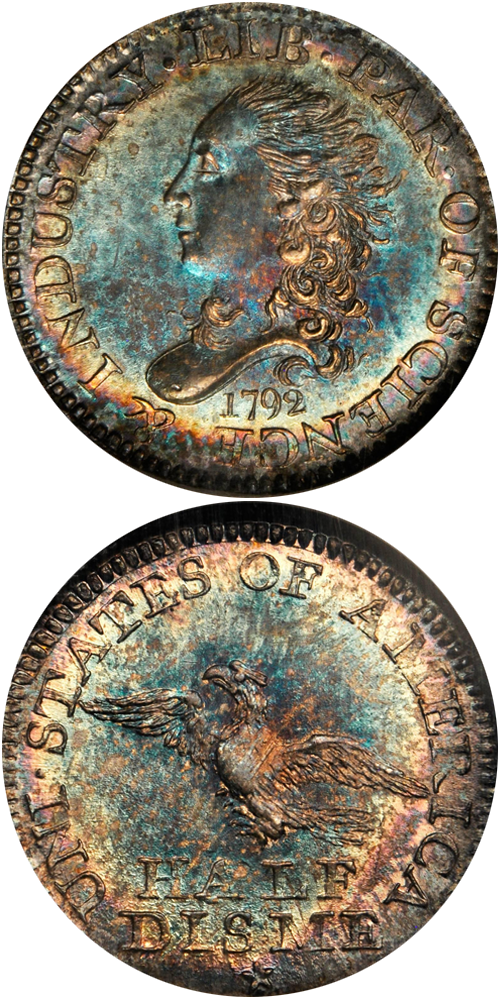1792 Bust Half Disme
No other American coin has the heritage, the claims to primacy, or the rich paper trail of history that follows the 1792 half disme (a denomination whose name was later changed to half dime). Handled by Jefferson, announced by Washington, its place of honor among the Founders is secure.
The fact that a significant number of 1792 half dismes survive in high grades does not diminish their importance. Instead, it magnifies it, serving as evidence that this “small beginning in the coinage” was novel, noticed, and cherished. Rather than being issued and spent without a second thought, those who received these coins knew they were special, the very first silver coins struck by the United States of America. Evidence both oral and documentary suggests that several of the Founders were given specimens to cherish. Some could have been plucked directly from the hand of Thomas Jefferson himself, to whom the entire mintage of 1,500 pieces was given in Philadelphia on July 13, 1792. Jefferson had deposited $75 worth of silver “at the Mint” on July 11 “to be coined,” says his meticulously composed account book, though the first United States Mint would not be ready for coining for a few more months, and equipment and certain items were stored for the time being in the shop of John Harper not far away. As Jefferson was the depositor of the raw bullion (probably in the form of the then-current Spanish milled dollars or their fractions) and he was the man to whom the entire mintage was handed on that July day in Philadelphia, each and every half disme traces its provenance back to Jefferson’s hands.
How Jefferson distributed them is unknown, but clearly they traveled far and wide. Examples have been found by metal detectorists in Virginia and New Jersey. With relatively few exceptions, most surviving coins show wear, often extensive. Indeed, most 1792 half dismes did their job, which is to say they were spent, and spent, and spent again.
The famous quote placed in Washington’s annual message about the half dismes was actually written by Jefferson. Washington asked his Secretary of State on August 23, 1792, to “note down, or rather to frame into paragraphs or sections such matters as may occur to you as fit and proper for general communication at the opening of the next Session of Congress—not only in the department of State, but on any other subject applicable to the occasion.”
Jefferson acknowledged the request on September 9 and fulfilled it on October 15. The text he sent to Washington noted “in execution of the authority given by the legislature, measures have been taken for engaging some artists from abroad to aid in the establishment of our Mint; others have been employed at home; provision has been made of the requisite buildings, and these are now putting into proper condition for the purposes of the establishment. There has been also a small beginning in the coinage of the half dismes and cents, the want of small coins in circulation calling our first attentions to them.”
Alexander Hamilton acted as Washington’s editor, and the final version of the speech, given to Congress on November 6, 1792, omitted the references to cents; very few were struck, and these are thought to have been patterns not intended for circulation. The decision may have been made that their coinage was not noteworthy enough for mention, as the public would not encounter them in commerce.
The half dismes, however, were noteworthy enough. They were a success: a well-designed, attractively produced precious metal coinage that was worthy of the nation whose name it bore. The 1792 half dismes were not patterns or experiments. The United States Constitution reserved for the federal government the sole power to coin money, a power that was first exercised with the production of the 1792 half dismes. Though the 1776 Continental dollar was struck in the name of the Continental Congress, no authorizing legislation has ever been found. An extremely rare group of patterns was coined in 1783 by the same body, but not for the purpose of circulation. The Fugio coppers were struck by a private contractor under the authority of the Continental Congress in 1787, before the Constitution was ratified and before the Mint was planned.
The 250 or so surviving half dismes of 1792 are the sole survivors of the first official coinage of the United States of America, relics of the very beginnings of the American monetary system.
The example to the left was sold by Stack's Bowers Galleries in the January 2013 Americana Auction, where it realized $1,145,625.
1792 Half Disme Auction Highlights
 NGC MS-68 Sold for $1,145,625 View Lot 13093 |  PCGS MS-66 Sold for $793,125 View Lot 4043 |  PCGS MS-64 Sold for $470,000 View Lot 2025 |






